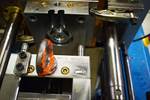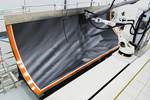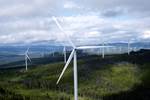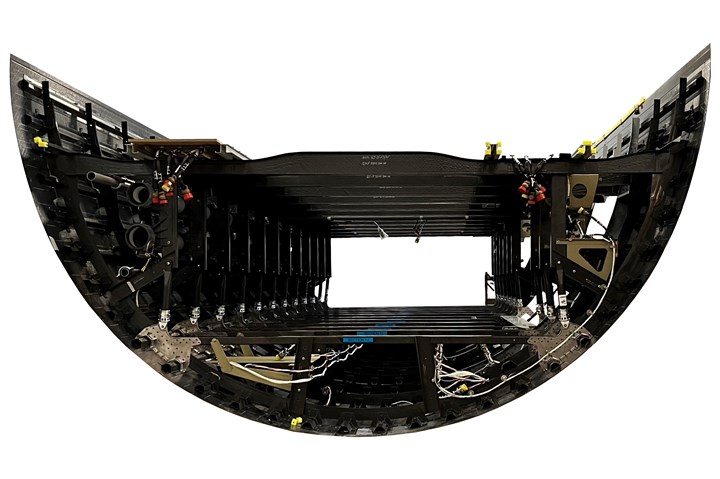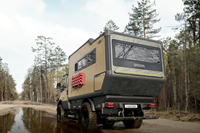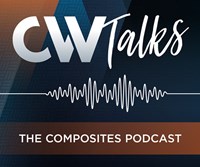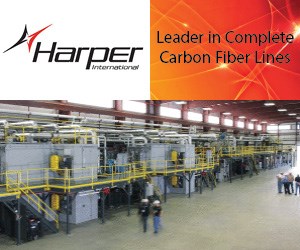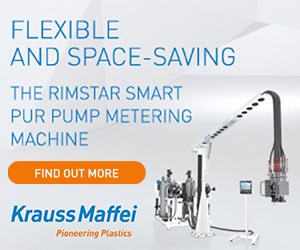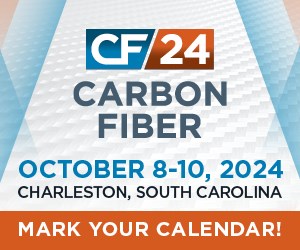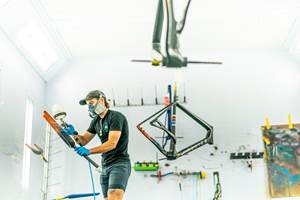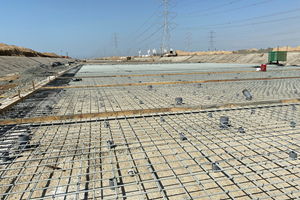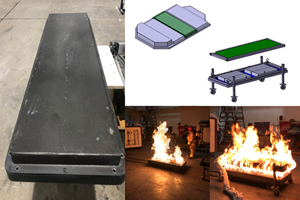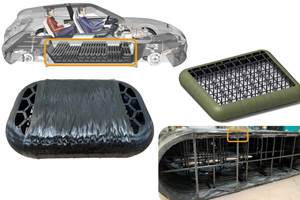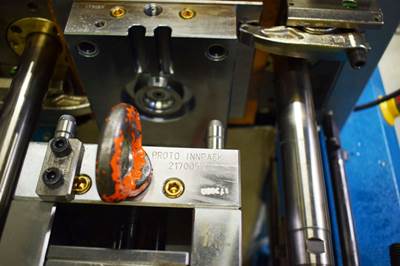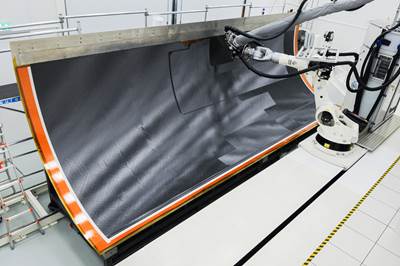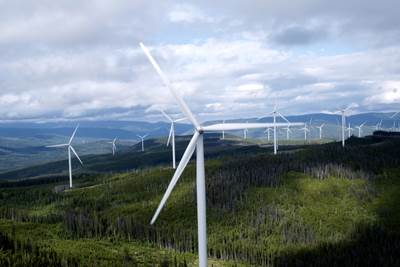STUNNING project completes lower half of MFFD
Clean Sky project has delivered the 8 × 4 meter welded aerostructure component, aided by advanced thermoplastic composite technologies and smart robotics.
GKN Fokker (Papendrecht, Netherlands), Netherlands Aerospace Centre (NLR, Amsterdam, Netherlands) Delft University of Technology (TU Delft, Delft, Netherlands) and SAM|XL (Delft, Netherlands) have successfully completed the manufacture of the lower fuselage section of the Multifunctional Fuselage Demonstrator (MFFD), a project led by Airbus (Tolouse, France). The 8 × 4-meter composite structure, reported to be one of the world’s largest thermoplastic components, was delivered under the Clean Sky 2 STUNNING project.
The MFFD is an 8-meter-long fuselage barrel that will be made from welded thermoplastic composites, STUNNING being one dozens of individual projects and work packages involved in its completion. Ultimately, the project demonstrates how the use of thermoplastic composites can help realize a next-gen fleet of aircraft capable of offering the same strength and durability as aluminum, while drastically reducing the fuselage recurring cost, as well as the overall weight of aircraft and the subsequent emissions. (CW has reported extensively on the MFFD, see “Proving out LM PAEK welding for Multifunctional Fuselage Demonstrator” and “Moving forward on the Multifunctional Fuselage Demonstrator (MFFD).”)
The aerostructure consists of more than 400 fiber-reinforced thermoplastic parts, as well as thousands of spot welds and hundreds of meters of continuous welds (read “Thermoplastic composites welding advances for more sustainable airframes”). The fuselage lower half will be joined at Fraunhofer IFAM in Stade — as of February 2023, the upper shell skin was completed — with the upper half made by German Aerospace Center (DLR) Institute of Structures and Design in Augsburg.
The MFFD project aims to demonstrate high-rate production (HRP) of a minimum of 60 aircraft per month (up to 100 aircraft), reduce the total fuselage weight by 1 ton (10%) and reduce the total fuselage recurring cost by €1 million (20%). STUNNING contributed to these objectives by showcasing novel thermoplastic manufacturing and joining technologies, as well as modular manufacturing techniques and automation.
GKN Fokker was responsible for the assembly of STUNNING, which consisted of a skin module and a floor grid module. The skin module featured a skin made as a single part by NLR using automatic fiber placement (AFP), 38 stringers from Xelis made using continuous compression molding, some of which joggled by NLR, 208 injection-molded clips produced by the ECO-CLIP consortium and frame sub-assemblies.
The floor grid module included floor beam subassemblies with passenger floor beams made via AFP. Both frame and floor beam subassemblies were made by GKN Fokker. The floor grid was fully equipped with various systems before installation in the skin module.
“This breakthrough project, which began in 2017, has significantly advanced our understanding and accelerated the development of thermoplastic technologies for large and complex aircraft parts,” Arnt Offringa, director of GKN Aerospace’s Global Technology Center NL. “It has showcased the potential for industrial-scale application of robotic welding in the assembly of thermoplastic aerostructures. The partnership approach to STUNNING has also been a great success, showing how much progress can be made when working together. Collaboration projects such as this will be vital as we continue to push the boundaries of technology in order to meet our sustainability targets.”
The demonstrator was assembled in SAM|XL at the TU Delft Campus, where a 10 × 11 × 4-meter ultrasonic welding robot was built from numerous machine parts and software components supplied by European partners. Team SAM|XL was responsible for the integration of the robotic welding cell and the development of smart control and programming methods. Valuable lessons were learned related to “design for automated assembly.”
In a joint effort, rapid energy-efficient ultrasonic welding technology was scaled-up from the lab at the Faculty of Aerospace Engineering to an industrial-scale solution for dustless assembly of the demonstrator involving 1,600 structurally sound spot welds. Further maturation of this game changing assembly technology will be accelerated in SAM|XL’s new robotic welding lab.
Related Content
Cycling forward with bike frame materials and processes
Fine-tuning of conventional materials and processes characterizes today’s CFRP bicycle frame manufacturing, whether in the large factories of Asia or at reshored facilities in North America and Europe. Thermoplastic resins and automated processes are on the horizon, though likely years away from high-volume production levels.
Read MoreComposite rebar for future infrastructure
GFRP eliminates risk of corrosion and increases durability fourfold for reinforced concrete that meets future demands as traffic, urbanization and extreme weather increase.
Read MorePrice, performance, protection: EV battery enclosures, Part 1
Composite technologies are growing in use as suppliers continue efforts to meet more demanding requirements for EV battery enclosures.
Read MoreTU Munich develops cuboidal conformable tanks using carbon fiber composites for increased hydrogen storage
Flat tank enabling standard platform for BEV and FCEV uses thermoplastic and thermoset composites, overwrapped skeleton design in pursuit of 25% more H2 storage.
Read MoreRead Next
INN-PAEK project to develop 100% recyclable, lightweight thermoplastic flange wheels for future aircraft
The AITIIP Technology Center leads this research with partner Liebherr Group to develop a technology by June 2023 that contributes to more sustainable, eco-friendly production systems.
Read MoreSTUNNING project successfully develops 8.5-meter thermoplastic fuselage skin
Clean Sky 2 project under the MFFD program produces two segments of an 8.5-meter-long, 4-meter-diameter thermoplastic fuselage skin via NLR’s in-house AFP machine, with consolidation plans this summer.
Read MoreComposites end markets: Energy (2024)
Composites are used widely in oil/gas, wind and other renewable energy applications. Despite market challenges, growth potential and innovation for composites continue.
Read More

